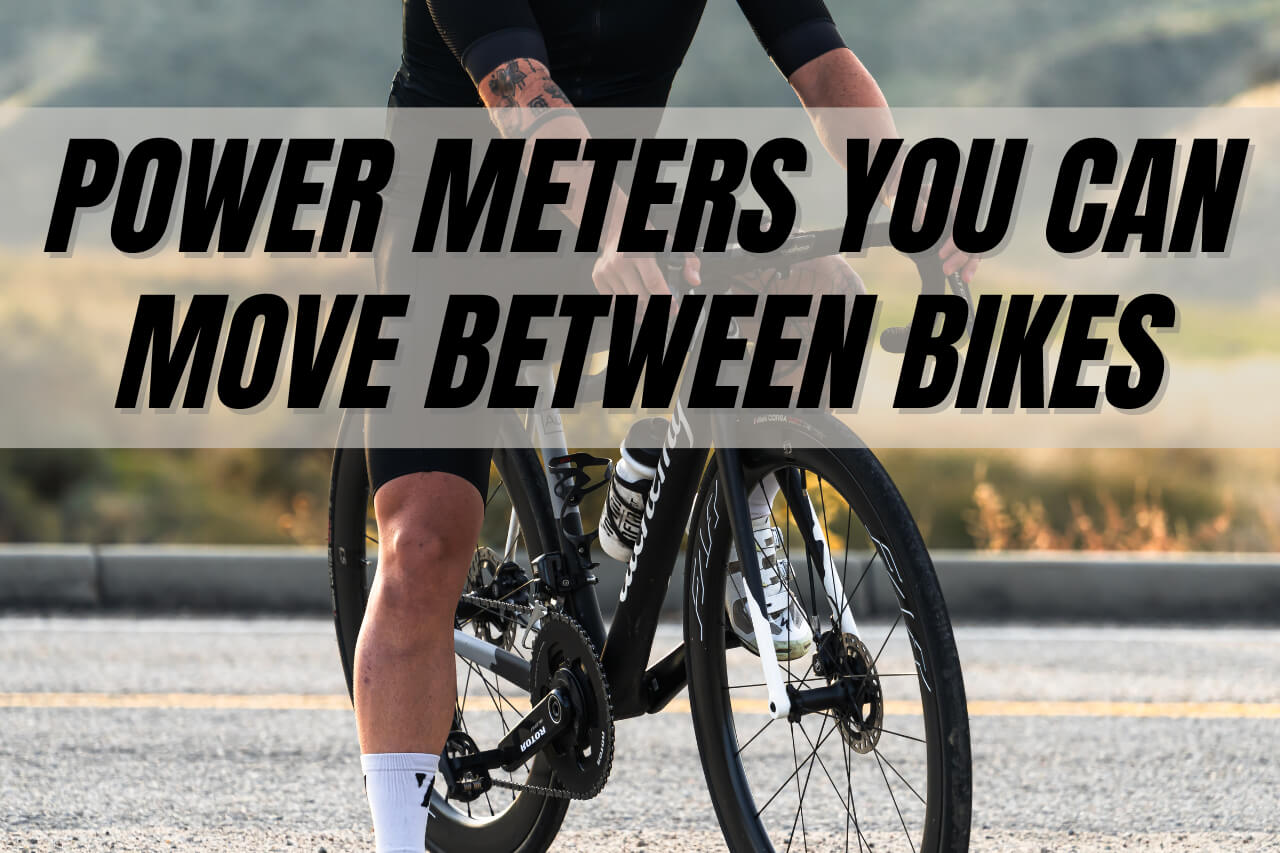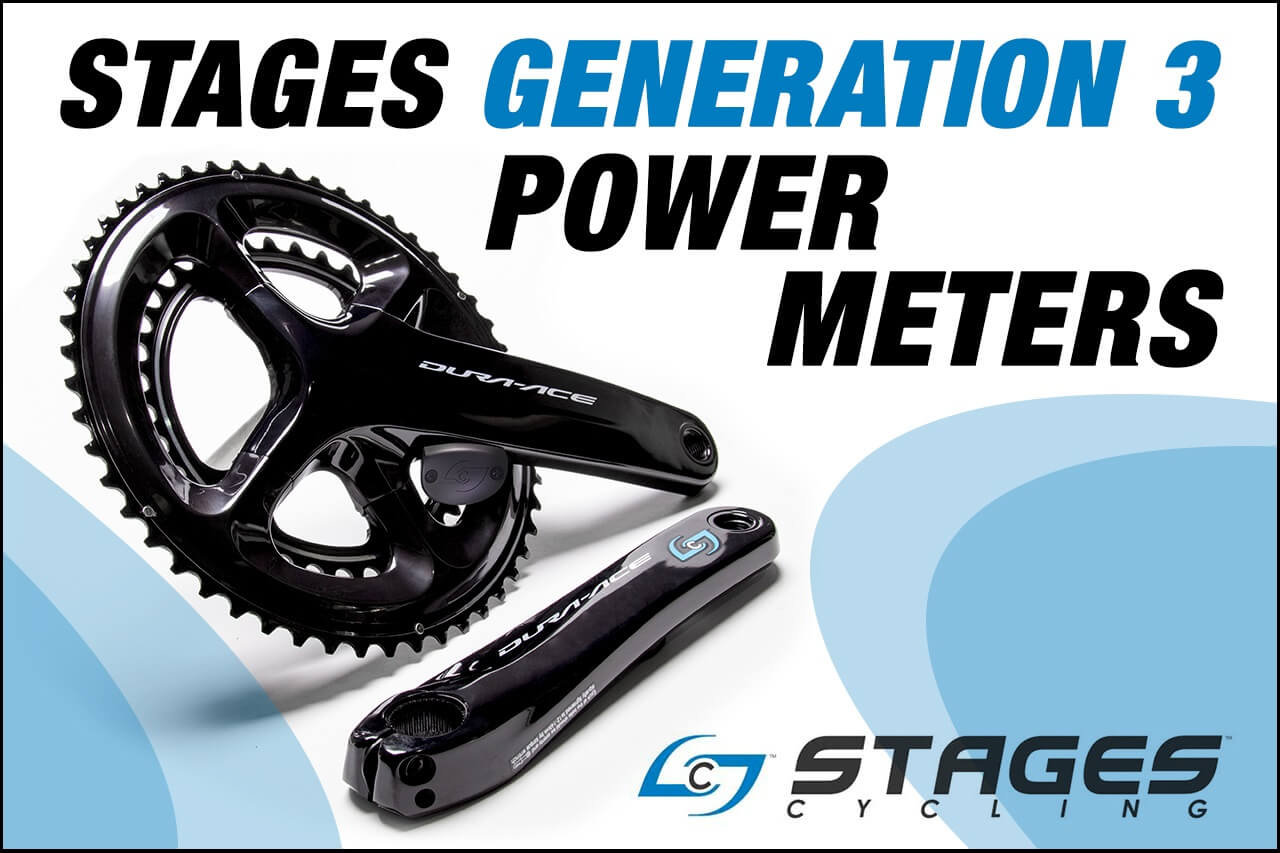Since the introduction of the first power meter back in the late 80’s, the market has grown substantially – both in terms of manufacturers and types of power meters. However, the majority of power meters have always been aimed at road cyclists. Why? It’s just a bigger market, there are more people on road bikes and that’s where more of the demand is. But since we have been in this business, it’s been fun to watch the mountain bike side of the market come to life. As of this writing, we have close to 70 different mountain bike power meters available…not too shabby. So if you’re in the market for a power meter for your MTB, this article will hopefully bring you up to speed!

Mountain Bike Power Meter Market
While the road market still dominates demand, there are several different mountain bike power meters that are available. In fact, of the seven types of power meters that are available for road bikes, six are now available for MTB (crank, spider, crank arm, handlebar, and bottom bracket). A pedal-based power meter is all that is lacking for MTB – but as you will see below, it’s on the way! So the chances are high that you can find something that fits both your bike and your budget.
How Mountain Bike Power Meters Work
Mountain bike power meters are just like their road bike counterparts. The power meters house strain gauges and electronics within a bike component. This could be within a crank, crank arm, etc. The strain gauges measure the power, or torque, produced by the rider. They also measure cadence, using either accelerometers or magnets. Both power and cadence information is sent wirelessly to your head unit using either ANT+ or Bluetooth SMART.
Your Mountain Bike Power Options Based on Power Meter Type
1. Crank
With a crank based power meter, your entire crankset is replaced for a new, power-equipped version. This power meter type is usually the most expensive as you are buying an entire crankset, in addition to the power meter bits. Cranks usually measure both legs, can sometimes also provide independent left/right power and are typically pretty crash-resistant.
SRM
SRM is widely known for manufacturing some of the best road power meters. Their mountain bike power meters are every bit as good and use the same spider-based design. SRM’s flagship MTB power meter is the SRM SRAM MTB Power Meter. It features a rechargeable battery, +/- 1.0% accuracy and weighs in at only 144 grams. It’s not cheap, but it’s a beauty and is highly recommended if you can afford it.
SRM SRAM MTB Power Meter

FSA MTB PowerBox Carbon
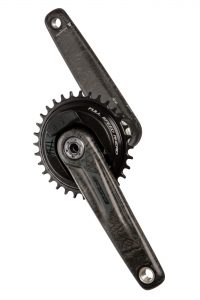
FSA
FSA offers their PowerBox, which is available in a carbon version for MTB. The FSA PowerBox MTB Carbon uses power2max’s proven spider design and comes with FSA aluminum chainrings and FSA hollow carbon composite arms. The power meter uses a CR2450 battery and is accurate to within 2.0%. It sells for $1,150.
ROTOR
ROTOR makes mountain bike power meters that use strain gauges located in the axle. This includes the ROTOR 2INpower MTB and ROTOR INpower MTB cranksets. These power meters are made to run in a 1x (single chainring) configuration and feature Bluetooth SMART and rechargeable li-ion batteries. In addition, with a second strain gauge located on the chainring side, the 2INpower MTB can measure independent left/right power.
ROTOR 2INpower MTB Crankset

2. Spider
With a spider-based power meter, you simply swap out your current spider for the new, power-equipped version. You then bolt up a 104 BCD 4-bolt (or in the case of the ROTOR, a 110 BCD 4-bolt) chainring and you’re off to the races. These units are great in that they allow you to keep your current crankset. Therefore, they are more affordable than crank-based units, measure both legs (as power from both legs passes through the spider) and are usually very accurate.
Note 1 – for bikes with a direct mount chainring, you will have to replace your ring with a new, 4-bolt version. Note 2 – spider-based units limit how small of a ring you can run. The power2max and Quarq limit you to a 32T as the smallest size – which usually isn’t too much on an issue for most. However the ROTOR limits you to a 34T. This starts to get a bit big for some of us, especially if your local terrain is hilly.
power2max
power2max makes spider-based power meters for SRAM, Race Face, Praxis, Cannondale and Shimano cranksets. These are one of our favorite power meters and have found their way onto several bikes here at our office. This spider-based design measures both legs, is accurate and has proven to be very reliable. These units just work – day in and day out. They also feature Bluetooth SMART, auto-zero and are accurate to +/- 1.0-2.0% (based on the model). Prices start at $590.
power2max NGeco SRAM MTB Power Meter
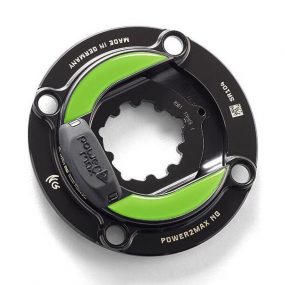
Quarq SRAM XX1 Eagle DUB Power Meter

Quarq
Quarq was been in the power meter game for a long time now and builds some solid units. Their Quarq SRAM XX1 Eagle DUB Power Meter is one of our better selling MTB power meters. It’s similar to the power2max in many respects (price, power measurement, reliability), however the big difference is crankset compatibility. The XX1 is only compatible with the SRAM XX1 Eagle DUB 8-bolt crankset. So if you currently have that crankset on your bike, I’d definitely consider this power meter as a great option.
ROTOR
ROTOR’s newest power meter is the ROTOR INspider MTB Power Meter. Like both spiders above, the INspider measures both legs and is priced comparably at $685. Whereas the Quarq XX1 only works on Quarq cranksets, the INspider only works on ROTOR cranksets. Specifically, it fits any of ROTOR’s newer direct mount cranksets such as the Kapic, Hawk and Raptor cranks for MTB. The INspider records data via four sets of opposing gauges, is accurate to +/- 1.0% and features ANT+ and Bluetooth SMART. It has a USB-rechargeable battery with 200-hour battery life.
ROTOR INspider Power Meter
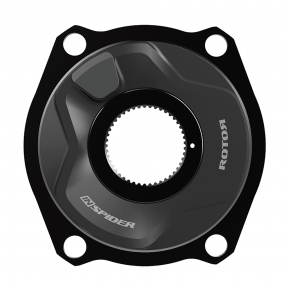
3. Crank Arm
Both 4iiii Innovations and Stages Cycling manufactures MTB power meters. These left-only crank arm-based power meters replace your current left side crank arm. These units take the power that is generated by your left leg and double it in order to determine your total power (which is how all left-side power meters operate).
4iiii Innovations
4iiii makes the PRECISION power meter which is compatible with Shimano cranksets. For example, the 4iiii PRECISION 3+ Shimano XT M8100/8120 Power Meter sells for $389 and the 4iiii PRECISION 3+ Shimano XTR M9100 Power Meter is $529. The PRECISION is one of the most affordable direct force power meters available. They are also extremely light with an added weight of less than 10 grams.
4iiii PRECISION 3+ Shimano XTR M9100

Stages Carbon for SRAM BB30

Stages Cycling
Stages Cycling makes units that are very similar to 4iiii, however they offer a wider selection with MTB versions for Shimano, SRAM, Race Face and Cannondale. Prices range from $374 for the Stages Cannondale MTB Power Meter to $569 for the Stages Shimano XTR M9100/M9120. They have also done something pretty slick with their Stages Carbon SRAM BB30 Power Meter. Using different spindles, they have created one carbon arm that can work on a variety of cranksets, road included.
4. Handlebars (OFPM)
Unlike the other power meters discussed here which are direct force power meters and use strain gauges to measure power, these power meters mount on your handlebars and measure your power using opposing force technology.
Velocomp
Velocomp’s PowerPod Power Meter, with models starting at $249, can be used on any bike, MTB included. In order to account for off-road terrain (bumps, rocks, etc.), the PowerPod features Dynamic Coefficient of Rolling Resistance (DCRR). DCRR enables the PowerPod to measure road vibration 800 times per second and convert the measurements into rolling resistance corrections. This keeps the PowerPod accurate regardless of road surface.
PowerPod V5 Power Meter
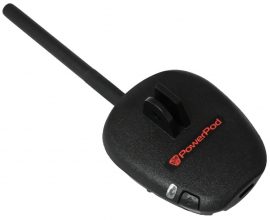
5. Bottom Bracket
With a bottom bracket power meter, power is measured in the axle. You keep your current crankset, and just swap out your existing spindle. These power meters measure left leg power only, similar to left-sided crank arms discussed above.
Race Face
The Race Face CINCH is a power-equipped spindle that replaces your current spindle. The CINCH sells for $599 and is compatible with Race Face cranksets such as the Next SL G5, Next SL G4, Next SL G3, Next R and Turbine. The CINCH features Bluetooth SMART and rechargeable li-ion battery technology.
Race Face CINCH Spindle
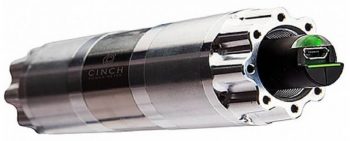
6. Pedal
Pedal-based power meters incorporate strain gauges inside the pedal itself. While new to MTB, on the road, this is a very popular power meter type. These power meters fit just about any bike, are easy to install and can be moved from bike to bike.
Favero
Favero has recently released the Assioma PRO MX-2 (dual-sided) and PRO MX-1 (single-sided) power meter pedals. These pedals use the reliable and accurate technology available in their road pedals. Additionally, all the electronics are housed within the spindle which removes the need for a bulky pod and provides extra protection from crashes and pedal strikes. These pedals use a SPD 2-bolt cleat, making it a popular option for many riders.
The PRO MX-2 will provide true left/right power while the MX-1 will provide power from the left leg. Both pedals are +/- 1.0% accurate, use ANT+ and Bluetooth, have a rechargeable 60 hour battery and come with a 2-year manufacturer’s warranty.
Favero Assioma PRO MX Power Meter Pedal

SRM X-Power MTB Power Meter Pedal

SRM
The SRM X-Power Power Meter Pedal is SRM’s first ever mountain bike power meter pedal. Like road power meter pedals, the X-Power will house the electronics and batteries inside the pedal spindle, protecting them from the elements, crashes and rock strikes. However, it will use a standard Shimano SPD cleat making it a true MTB pedal.
The X-Power features true left/right power, ANT+ and Bluetooth and gets around 30 hours of run time out of the rechargeable lithium ion batteries. It also has a 2-year manufacturer’s warranty.
Mountain Bike Power Meter Summary
While there are not as many mountain bike power meters as there are road options, you should be able to find something that works among the available options. Based on our experience, the two most popular MTB options are the crank arm-based power meter (4iiii and Stages) or the spider-based design (power2max, Quarq or ROTOR). While the crank arms only measure left leg power, they are affordable and easy to install. In addition, you can find one to fit almost any crankset. Spider-based units take a bit more work to install, but they are relatively affordable, they measure power from both legs and you can find one to fit just about any crankset.
If you plan to make a change to your crankset (perhaps you’re moving to a 2x or 1x setup and have to buy a new crankset anyway), you might consider a crank-based power meter. These units cost a bit more, but they measure both legs and some also offer independent left/right power measurement. If you want to explore your options in more depth, give us a call – we’re here to help!

 LOOK Keo Blade Power Meter Pedals
LOOK Keo Blade Power Meter Pedals  Stages Shimano Ultegra R8100 Power Meter
Stages Shimano Ultegra R8100 Power Meter  power2max NGeco Race Face MTB Power Meter
power2max NGeco Race Face MTB Power Meter 
